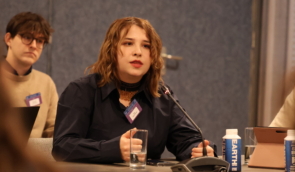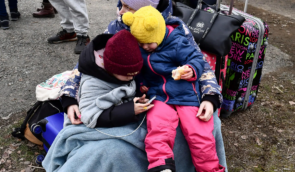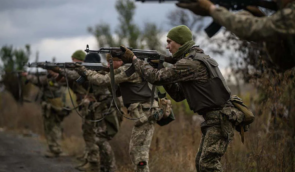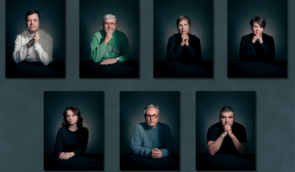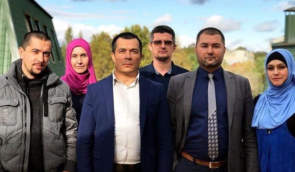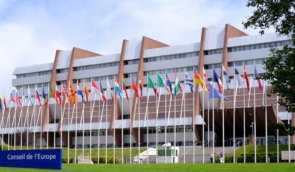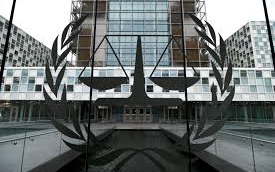War in Ukraine. Day 455. Monthly update 2023, #3
What was life like under the occupation in April-May, what changed in foreign policy and other spheres under the influence of Russia’s war against Ukraine? The review was first published on the website Share the Truth.

Cities under the attack
On April 28, Russian forces launched a missile attack on Ukraine, hitting residential buildings in Uman, Cherkasy region. 23 people were killed: 22 were pulled from the rubble, and one person died in the hospital. Among the dead were six children: three boys (one and a half, 16 and 17 years old) and three girls (8, 11 and 14 years old).
As for the south of Ukraine, On May 3, near the city of Kherson Russian shelling killed 23 people, hitting a hypermarket, a railway station, and residential buildings. On May 8, Ukrainian was attacked by 35 suicide drones and 16 missiles according to Kyiv’s military command.
Damages and recovery
Deputy Chairman of the National Security, Defense and Intelligence Committee Yuriy Aristov announced that the amount of direct and only documented material losses amounted to $143.8 billion. The most affected are residential buildings (37.3%), infrastructure (25.2%), assets of enterprises and industry (7.9%), education facilities (6.2%), agriculture and land resources (6.1%), energy infrastructure (5.6%).
Crimea
About 30 members of the Mejlis of the Crimean Tatar people are being oppressed by Russia during the years of occupation of Crimea. Since the beginning of the occupation in 2014, the members of the Mejlis became a “target” for persecution by the Russian administration. The following members of the Mejlis are among the most famous victims of politically motivated persecution in Crimea: Nariman Dzhelial, Akhtem Chyihoz, Ilmi Umerov, Refat Chubarov, Mustafa Dzhemiliev.
Ukrainian President Volodymyr Zelenskyy said that the detention of Abdureshit Dzhepparov, a Crimean Tatar human rights activist, who was arrested for 15 days on April 25 by the Russian occupation court in Bilohirsk, Crimea, is an example of Russian repressions against indigenous people.
Human rights
Human-rights group ZMINA presented a report on the cases from different regions of Ukraine indicating the selectivity of Russian targeting civilians depending on the region and its perceived level of (non) support for the Russian invasion among the local population. The analysis is based on 57 in-depth interviews with civilians who had been victims and witnesses of torture and ill-treatment and 67 in-depth interviews with victims of enforced disappearances and relatives of victims.
The New York Times reports that a leaked internal review commissioned by Amnesty International contained significant shortcomings, while accusing Ukraine of illegally endangering citizens by placing armed forces in civilian areas. The review panel nevertheless unanimously concluded that Amnesty International had mishandled its statement in several ways and that its key conclusions that Ukraine “violated international law were “not sufficiently substantiated” by the available evidence”. Specifically, the August release had accused Ukraine of a “pattern” of failing to take either step, while also saying it should have warned civilians. But the report said Amnesty International “failed to meaningfully engage with Ukrainian authorities” about whether equally good alternative locations, evacuations or warnings were feasible. Also, according to the report, the descriptor “pattern” was imprudent because it implied that generally, “many or most of the civilian victims of the war died as a result of Ukraine’s decision to locate its forces in the vicinity of civilians,” as opposed to “Russia’s willingness to target civilians or civilian objects deliberately or indiscriminately.”
Life under the occupation
In the temporarily occupied territories, Russians continue to impose on the local population the Kremlin’s views on the Russian-Ukrainian war, for this purpose the invaders are equipping “cinemas.” There, to watch Russian propaganda films, Russians forcibly bring employees of communal institutions and other captured enterprises.
The humanitarian crisis is spreading out in the temporarily occupied areas of Luhansk region since most of the medicines go to the needs of Russian combatants. After the transfer of the majority of the region’s hospitals to the operation format of military hospitals, the civilians cannot receive medical services. At the same time people faced a serious shortage of medicines as the priority in treatment was given to the Russian military.
In addition, on the temporarily occupied left bank of the Kherson region, representatives of the occupation administrations forfeit boats from the local people. This way they are trying to reduce the shortage of watercraft in formations of the Armed Forces of the Russian Federation.
The occupiers in Crimea are strengthening military and patriotic education of children, as the peninsula’s so-called governor, Sergey Aksyonov, signed the respective order. Schools are expected to organise such events such as Conscript Day and Ready for Work and Defence, encouraging children to Unarmy (Youth army).
Foreign policy
On April 20, an Agreement on Ukraine’s accession to the EU Civil Protection Mechanism was signed in Kyiv. This is the world’s largest system for providing internationally coordinated operational assistance in emergencies. Ukraine’s full participation in the Civil Protection Mechanism will help strengthen the country’s capacity to prevent and respond to natural, technogenic and military-related disasters at the national and international levels with the involvement of national forces of EU member states. On April 25, another €1.5 billion under the annual macro-financial assistance package was provided to Ukraine by the EU.
NATO Secretary General Jens Stoltenberg visited Ukraine on April 20 to meet with President Zelenskyy and his government. Mr Stoltenberg underlined NATO’s enduring support for Ukraine as it continues to defend itself against Russia’s brutal war of aggression. During the press-conference, the Secretary General underlined that NATO Allies have delivered more than 150 billion euros of support to Ukraine since Russia launched its full-scale invasion in February 2022, and that Allies have provided training for tens of thousands of Ukrainian soldiers over the years
Food security
According to the First Deputy Prime Minister and Minister of Economy of Ukraine Yuliia Svyrydenko, an action plan has been drawn up to demine agricultural lands. Priority economic regions have been identified, a map of potentially hazardous areas has been approved, and clear and transparent criteria for the phasing of demining have been established. A total of 470,000 hectares of agricultural land will be surveyed and demined. The largest area of contaminated land is in the south and east of Ukraine. More than 208,000 hectares need to be surveyed in the Kherson region, almost 160,000 hectares in Kharkiv region, and more than 85,000 hectares in Mykolaiv region. In addition, the First Deputy Prime Minister said that nearly 174,000 square kilometres of land in Ukraine are potentially contaminated, which affects food provision for 81 million people around the world.
The World Bank estimates that the full range of humanitarian demining activities would cost USD 37.4 billion. Preliminary estimates suggest that USD 1.5 billion is needed for priority examination and demining of agricultural land only.
Energy security
On May 2, Italy, a founding member of the European Bank for Reconstruction and Development (EBRD) and its strategic partner, signed an agreement to provide grants worth up to €10 million to support the Bank’s operations in Ukraine, in particular to support the electricity transmission system operator, Ukrenergo.
Media
According to the Press Freedom Index, published by Reporters Without Borders on May 3, the situation of press freedom in Ukraine has risen in the ranking from 106th to 79th place since last year. This is mainly due to the economic stabilisation of most media. In addition, the influence of oligarchs on journalism has been reduced. In the security category, however, Ukraine occupies the penultimate place worldwide due to Russian war crimes against media workers in Ukraine.
On May 4, Ilko Kucheriv “Democratic Initiatives” foundation together with Human Rights Centre ZMINA published a survey on challenges for freedom of speech and journalists in times of war. Most of the respondents affirm that freedom of speech exists in Ukraine. It has flaws, significant wartime restrictions, and vulnerabilities, but somehow it persists even in such circumstances. At the same time, the surveyed journalists living in the eastern macro-region were more likely than others to negatively assess the level of freedom of speech in Ukraine: 6% believe that freedom of speech is at a very low level, and 24% believe that it is at a low level. From the regional perspective, eastern Ukraine also has the largest share of those who assessed the level of freedom of speech in the country as extremely high.
At the same time, a significant number of journalists agree with the thesis that in the context of a full-scale war in Ukraine, there cannot be the same freedom of speech in its traditional sense as there was before the Russian invasion. During the quantitative expert survey, when asked whether censorship exists in Ukraine, 26% of respondents stated that it is systemic, 38% said it exists in certain media, and 31% believe it exists only as isolated cases. At the same time, the polarisation of journalists on this issue has increased significantly since 2019. 40% of the surveyed journalists believe in the need for limited censorship, while one third oppose it. Journalists who acknowledged the existence of censorship most often stated that it was carried out by various state or local authorities, as well as media owners. Self-censorship by journalists was in third place.
Source: Heinrich Boell Stiftung
If you have found a spelling error, please, notify us by selecting that text and pressing Ctrl+Enter.



